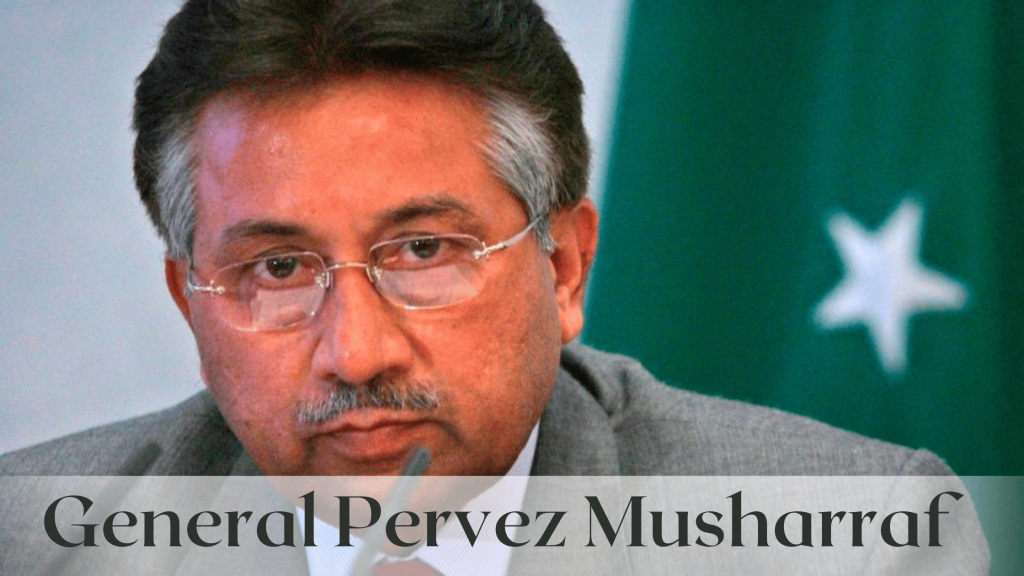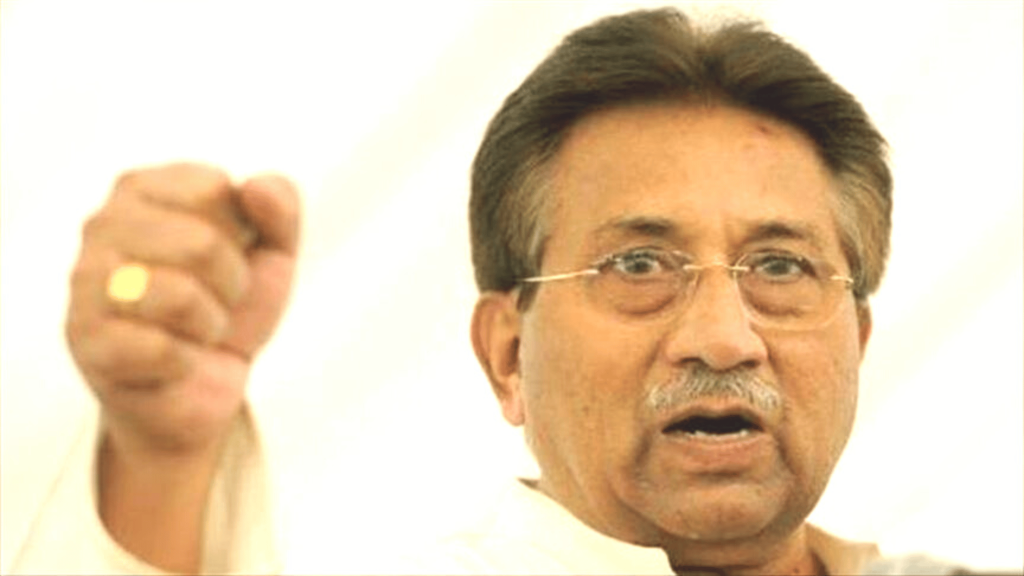Pervez Musharraf: The Life and Times of a Military Ruler
Explore the impact of Musharraf’s Martial Law: Delve into the intriguing life and journey of Pervez Musharraf, Pakistan’s 10th President and Chief of Army Staff, from 1998 to 2007. Uncover his lasting legacy, controversies, and significant role during his tenure from 2001 to 2008.
| Basic Information | Pervez Musharraf |
| Date of Birth | 11 August 1943 |
| Place of Birth | Delhi, India |
| Age | 79 years old |
| Date of Death | 5 February 2023 |
| Place of Death | Dubai |
| Education | Forman Christian College, Royal College of Defence Studies,Command and Staff College Quetta,Pakistan Military Academy, National Defence University, Pakistan |
| Cause of death | amyloidosis |
| Occupation | Military Officer and politician |
| Famous for | Tenth president of Pakistan |
| Other Activities | Independent political leader |
| Awards | Nishan-e-Imtiaz, Hilal-i-Imtiaz, Tamgha-e-Basalat, Order of King Abdulaziz ,Order of Zayed |
Pervez Musharraf Early Life and Education:
Pervez Musharraf, born into a family with a rich military tradition, emerged on a significant day. His father, Syed Musharraf Uddin, excelled in civil service and graduated from Aligarh Muslim University. Pervez received his early education in Mumbai, India, before moving to Pakistan after the 1947 partition. He furthered his education at St. Patrick’s School in Karachi, becoming a distinguished scholar and skilled soldier. Starting as a second lieutenant in 1964, he rose through the ranks, enhancing his military expertise at the National Defence College in Islamabad, where he earned a master’s degree in war studies and solidified his reputation as a brilliant scholar and military leader.
Military Career:
Pervez Musharraf, a prominent figure in the Pakistan Army, played crucial roles in conflicts like the 1971 India-Pakistan war and the 1987 Siachen skirmish. He served as a battalion and brigade commander, showcasing his leadership abilities. In 1998, Prime Minister Nawaz Sharif appointed him as the Chief of Army Staff, causing controversy due to his selection over senior generals. Despite this, Musharraf initiated reforms, introducing computerized records and a merit-based promotion system during his tenure as COAS.
Musharraf martial law & Rise to Power:
Pervez Musharraf seized power in October 1999 by leading a military coup against Prime Minister Nawaz Sharif. Accusing Sharif of corruption and mismanagement, Musharraf declared a state of emergency in the country. He assumed the title of Chief Executive, suspended the Constitution, and dissolved the National Assembly.
Initially, Musharraf’s coup received mixed reactions, both domestically and internationally. However, he swiftly consolidated his power and implemented a series of reforms aimed at modernizing and liberalizing the country. These reforms included privatizing state-owned enterprises, promoting women’s rights, and expanding media freedoms.

purpose of Pervez Musharraf’s martial law
imposed in Pakistan in 1999, was primarily driven by political and social instability in the country. Musharraf, who was the Chief of Army Staff at the time, cited corruption, misgovernance, and economic challenges as reasons for seizing power through a military coup. He aimed to restore law and order, stabilize the economy, and curb rampant corruption within the government. During his rule, he implemented various reforms, including modernizing the economy and improving infrastructure. However, his regime was criticized for suppressing democratic institutions, restricting freedom of speech, and violating human rights, leading to both domestic and international condemnation.
Pervez Musharraf martial law duration
Pervez Musharraf’s martial law lasted from October 1999 to November 2007, lasting for nearly eight years in Pakistan.
Achievements and Controversies of Pervez Musharraf:
In his presidency, Pervez Musharraf achieved numerous significant feats. He played a crucial role in the US-led War on Terror, actively supporting the invasion of Afghanistan and apprehending top Al-Qaeda members. Additionally, he spearheaded substantial economic growth in Pakistan, supervising the construction of new motorways and the expansion of the telecommunications sector.
Nevertheless, Musharraf’s tenure faced several controversies and setbacks. Critics criticized his management of the judiciary and media, particularly the 2007 dismissal of Pakistan’s Chief Justice.
Musharraf martial law & Tenure as Pakistan’s Leader:
In 1999, General Musharraf orchestrated a military coup that ousted Prime Minister Nawaz Sharif’s democratically elected government in Pakistan. Following the coup, Musharraf declared himself the country’s new leader and suspended the constitution. Many viewed his promises of elections and restoring democracy as a clear power grab.
During his time as Pakistan’s leader, Musharraf implemented a series of economic and social reforms to modernize the country. He also made efforts to expand relations with India and the United States. However, his regime marked itself with human rights abuses and the suppression of opposition voices.
Musharraf’s time in power came to an end in 2008, following a series of protests and a threat of impeachment. He was forced to resign and went into self-imposed exile in Dubai and London. In 2013, he returned to Pakistan to run for political office but was disqualified from running due to legal issues.
In 2019, Musharraf was sentenced to death by a Pakistani court for treason. However, he remains in self-imposed exile and has not returned to Pakistan to face his sentence.
Reforms and Policies of Pervez Musharraf :

During his presidency, Musharraf enacted several significant reforms and policies to modernize the country’s economy. These initiatives included:
- Privatization Program: Musharraf spearheaded a privatization program, aiming to reduce government intervention and attract foreign investment in Pakistan’s economy.
- Infrastructure Investment: He heavily invested in infrastructure, enhancing transportation and electricity supply by initiating projects such as highways, bridges, and dams.
- Education Reforms: Musharraf implemented reforms in education, establishing new universities and standardized tests to improve the quality of education in the country.
- Advancement of Women’s Rights: Musharraf advanced women’s rights by introducing the Women’s Protection Bill and establishing the National Commission on the Status of Women.
Conclusion:
Musharraf’s complex legacy in Pakistan’s history stems from his dual roles as a military leader and politician. During his regime, economic and social reforms were implemented, but they were overshadowed by human rights abuses and the suppression of opposition voices.
Currently, Musharraf resides in self-imposed exile, and his sentence for treason has not been executed yet. His story serves as a reminder of the challenges faced by countries striving to balance democracy and military power.
5 Replies to “Pervez Musharraf-Biography and Facts | Real World Hero”